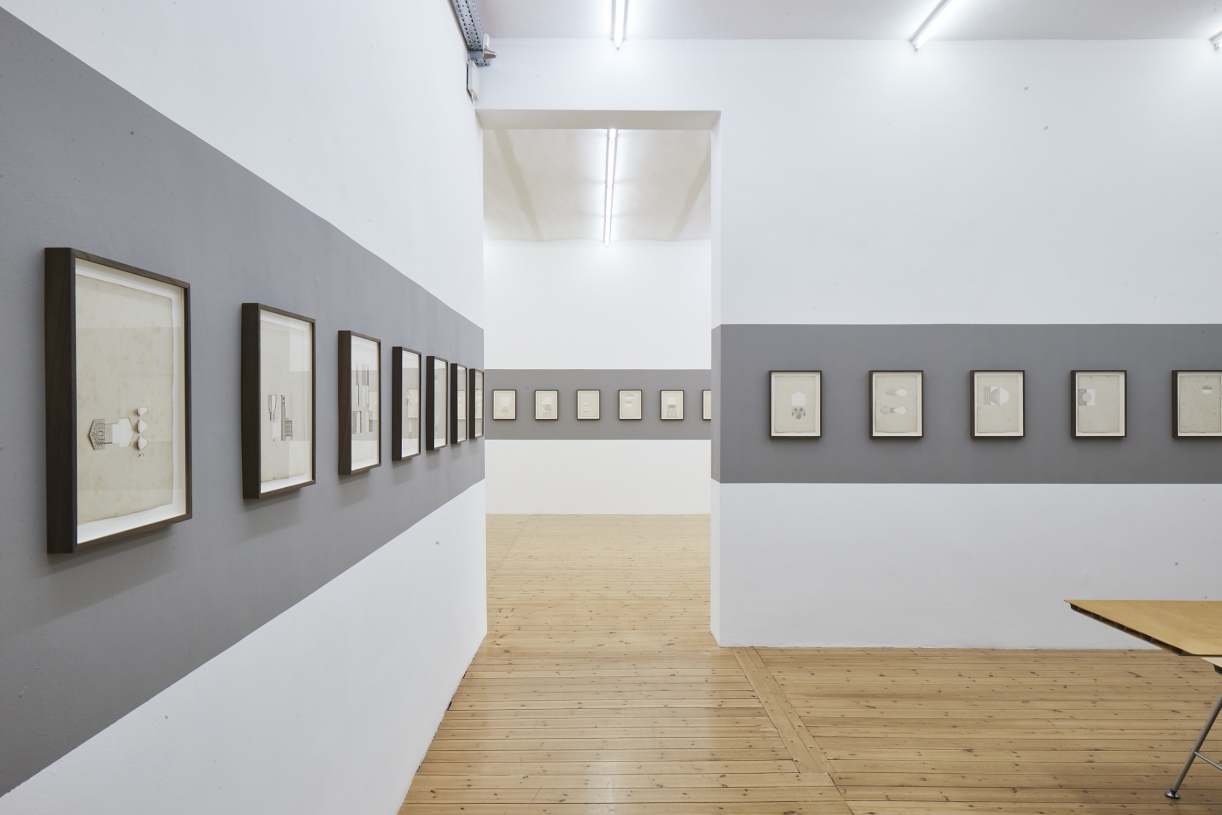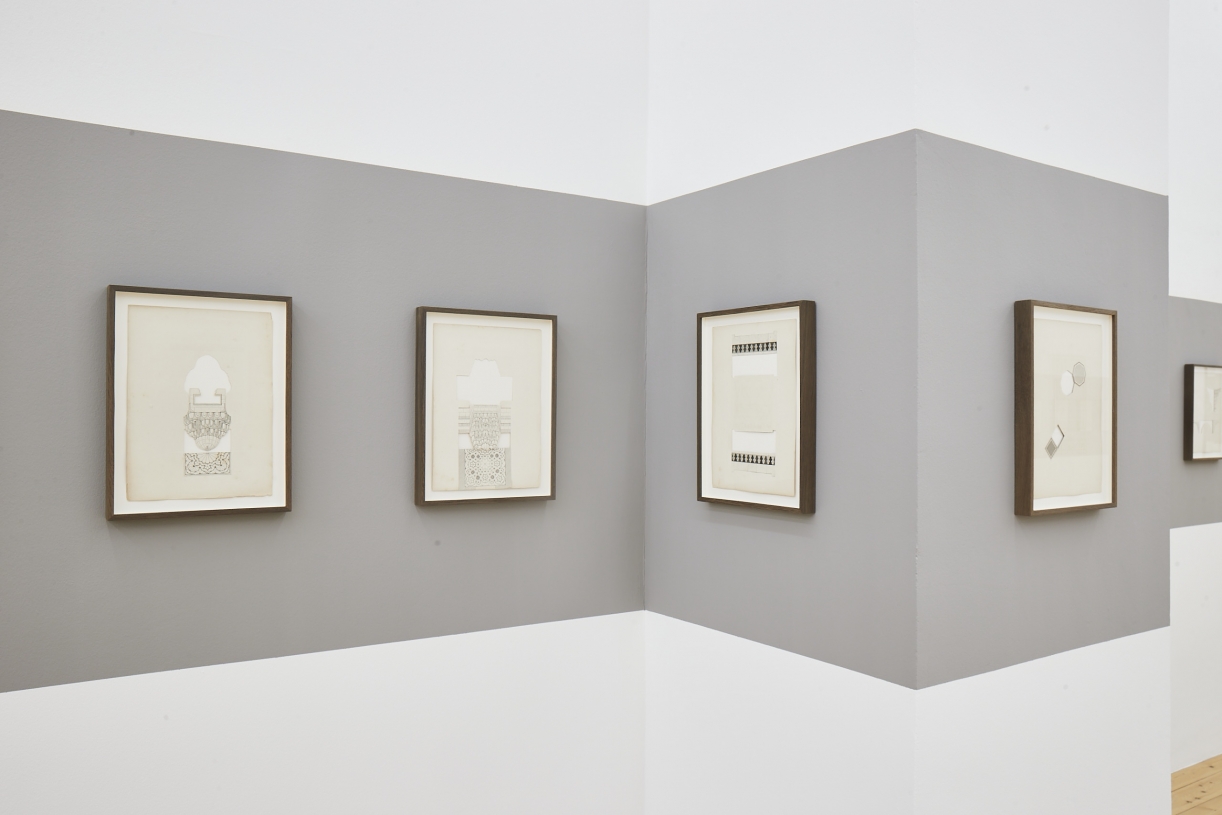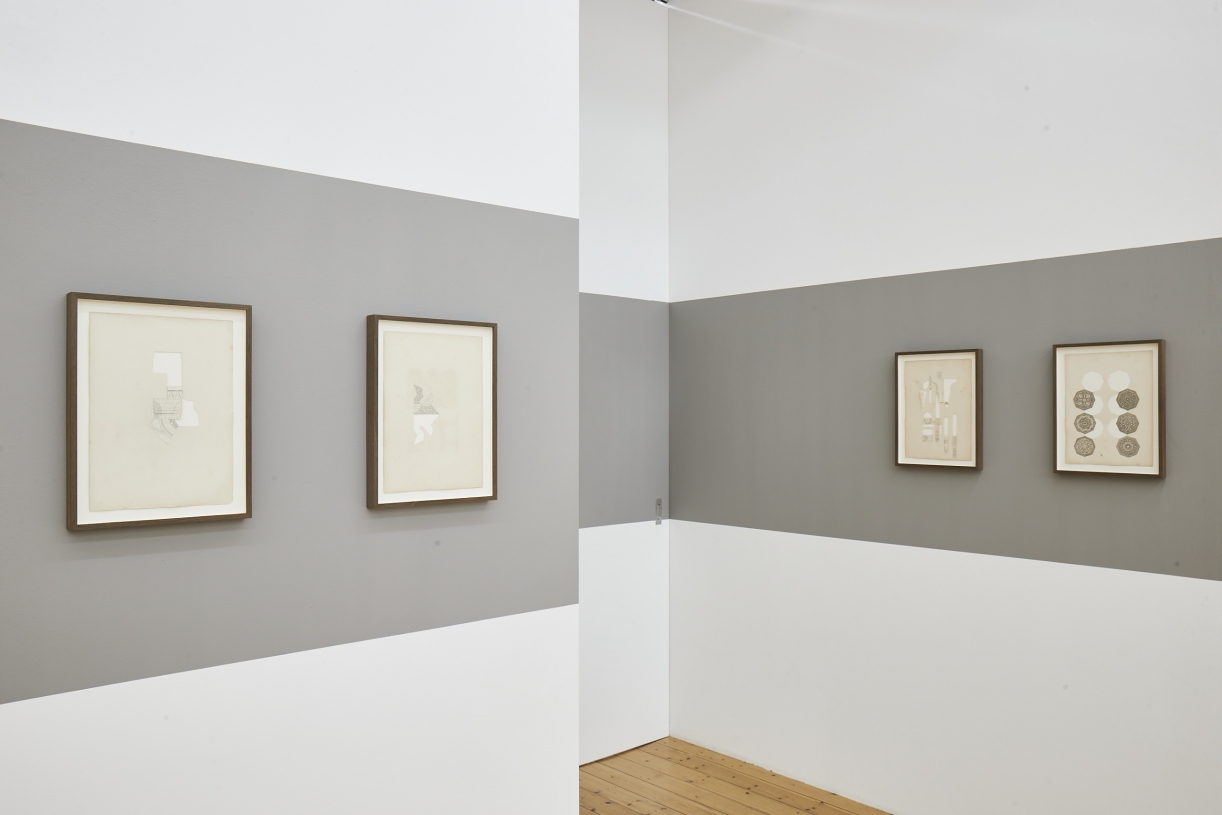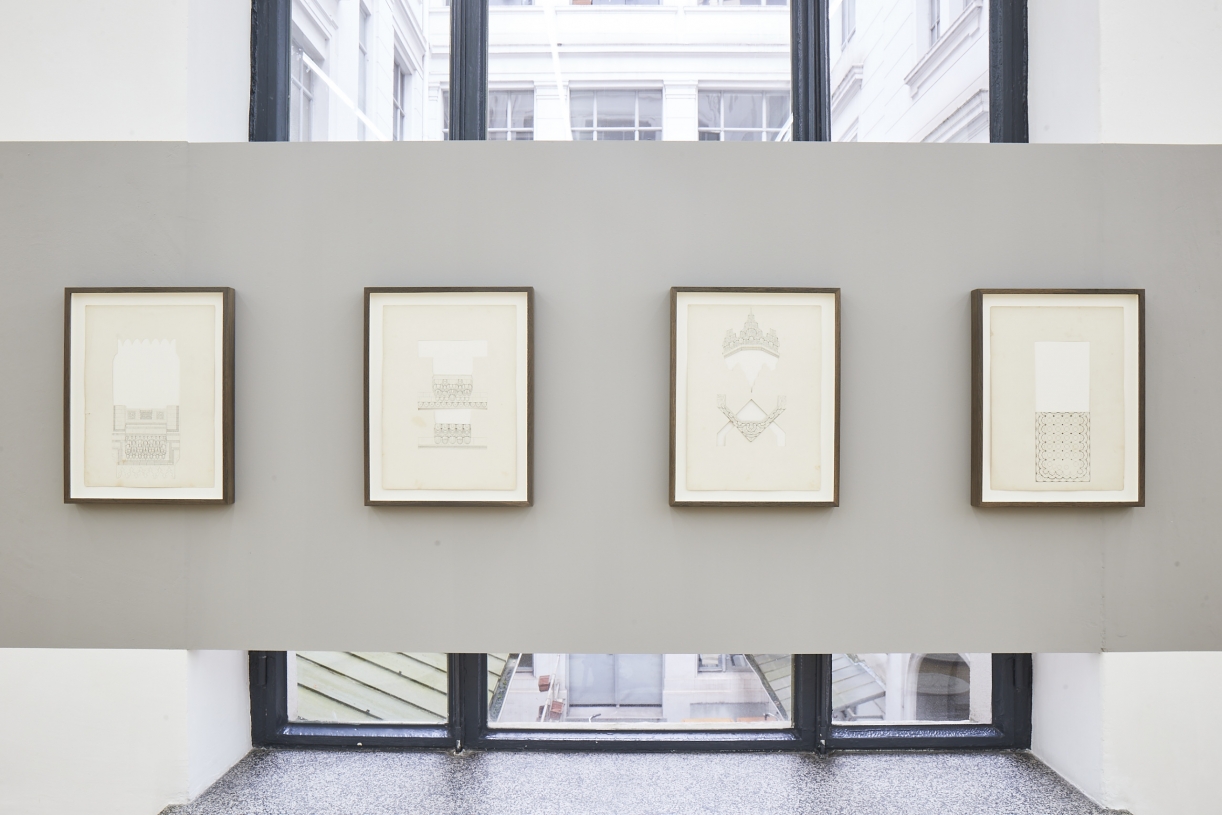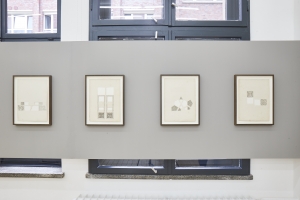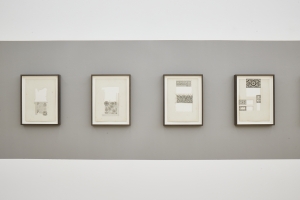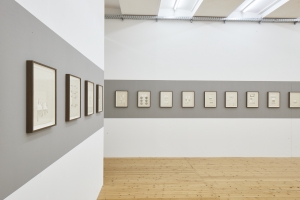Work: Decoupage, 1891-2021
Arabesque, 2021–ongoing
Découpage, 1891-2021
Découpages is a frieze of 114 cut-out sheets from an original 19th century manuscript by Jules Bourgoin (1838-1908). The French scholar traveled through Egypt to study architectural ornaments and produced precise documentation drawings. His elaborate research was compiled in books such as Les Arts Arabes or Les Eléments de l'Art Arabe, two works that set the standards for what was considered « Arab Art » in Europe. Tabet cuts-out and recomposes individual pages from these publications, in an attempt to find different possible geometries hidden within the document.
Rayyane Tabet, Decoupage, 1891-2021, Cutout on 114 original engravings from Jules Bourgoin's Precis de l'Art Arabe, 1891, each 40,5 x 31,2 cm, Exhibition view Sfeir-Semler Gallery Hamburg 2021
Work: Assemblage, 1910-2020
Assemblage, 1910-2020
Arabesques are usually used in repeating patterns and can be infinitely multiplied in order to cover a surface. In Assemblage Tabet follows the repetition logic by stacking twenty original redwood corbels salvaged from Julia Morgan’s Saint John’s Presbyterian Church in Berkeley. Morgan (1872–1957), who was a student of Bourgoin, was the first female architecture student at the École des Beaux-Arts in Paris and went on to become a prolific representative of the Arts and Crafts movement taking the idea of the arabesque from Europe to North America.
